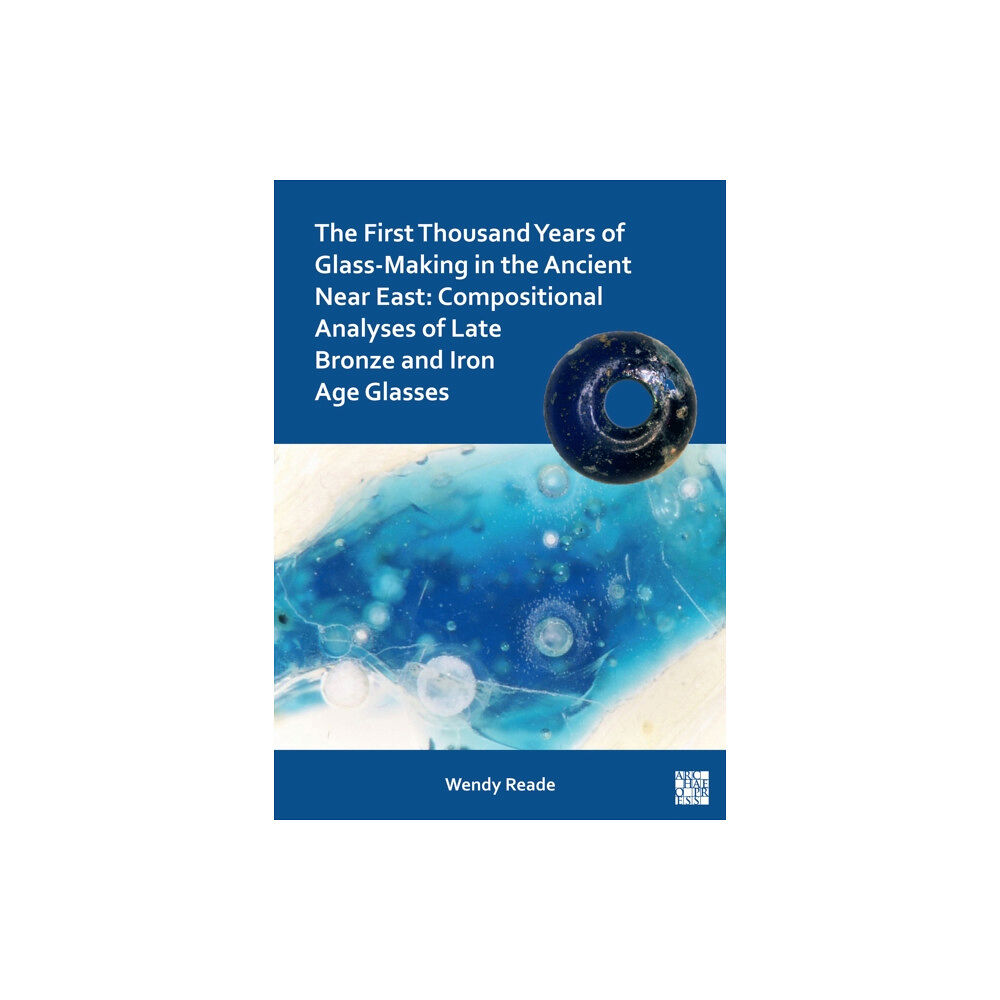- Hem
- Böcker
- Kurslitteratur
- Historia
- The First Thousand Years of Glass-Making in the Ancient Near East (häftad, eng)

The First Thousand Years of Glass-Making in the Ancient Near East (häftad, eng)
Glass-Making in the Ancient Near East explores glass composition and production from the mid-second to mid-first millennia BC, essent...
659 kr
705 kr
Slut i lager
- Fri frakt
Fri frakt över 299:-
Snabb leverans
Alltid låga priser
Produktbeskrivning
Glass-Making in the Ancient Near East explores glass composition and production from the mid-second to mid-first millennia BC, essentially the first thousand years of glass-making. Multi-element analyses of 132 glasses from Pella in Jordan, and Nuzi and Nimrud in Iraq (ancient Mesopotamia), produce new and important data that provide insights into the earliest glass production.
A novel method for data interpretation and presentation has been developed and used to characterise the glass types and to investigate questions of composition, raw materials, regional differences and similarities, and changes through time from the earliest consistent glass manufacture as represented at 16th century BC Pella, which is compared with Late Bronze Age Nuzi, to the Iron Age at both Pella and Nimrud.
These compositional data are compared with available glass compositional data from the widespread regions of the Levant, Mesopotamia, Egypt, Iran and France, uncovering fascinating connections that, when placed in the archaeological context, reveal much about glass production, raw material sources, and distribution of finished and raw glasses.
Technological innovations, including the introduction of natron-fluxed glasses, early decolouring with antimony, and the use of Egyptian cobalt colourant in Near Eastern glasses, are explored as part of this unique investigation of the critical developments in sophisticated and complex glass-making that laid the foundations for the establishment of large-scale production in the ensuing Hellenistic and Roman periods.
A novel method for data interpretation and presentation has been developed and used to characterise the glass types and to investigate questions of composition, raw materials, regional differences and similarities, and changes through time from the earliest consistent glass manufacture as represented at 16th century BC Pella, which is compared with Late Bronze Age Nuzi, to the Iron Age at both Pella and Nimrud.
These compositional data are compared with available glass compositional data from the widespread regions of the Levant, Mesopotamia, Egypt, Iran and France, uncovering fascinating connections that, when placed in the archaeological context, reveal much about glass production, raw material sources, and distribution of finished and raw glasses.
Technological innovations, including the introduction of natron-fluxed glasses, early decolouring with antimony, and the use of Egyptian cobalt colourant in Near Eastern glasses, are explored as part of this unique investigation of the critical developments in sophisticated and complex glass-making that laid the foundations for the establishment of large-scale production in the ensuing Hellenistic and Roman periods.
| Format | Häftad |
| Omfång | 274 sidor |
| Språk | Engelska |
| Förlag | Archaeopress |
| Utgivningsdatum | 2021-04-30 |
| ISBN | 9781789697032 |
Specifikation
Böcker
- Häftad, 274, Engelska, Archaeopress, 2021-04-30, 9781789697032
Leverans
Vi erbjuder flera smidiga leveransalternativ beroende på ditt postnummer, såsom Budbee Box, Early Bird, Instabox och DB Schenker. Vid köp över 299 kr är leveransen kostnadsfri, annars tillkommer en fraktavgift från 29 kr. Välj det alternativ som passar dig bäst för en bekväm leverans.
Betalning
Du kan betala tryggt och enkelt via Avarda med flera alternativ: Swish för snabb betalning, kortbetalning med VISA eller MasterCard, faktura med 30 dagars betalningstid, eller konto för flexibel delbetalning.
Specifikation
Det finns tyvärr inga specifikationer att visa för denna produkt.
